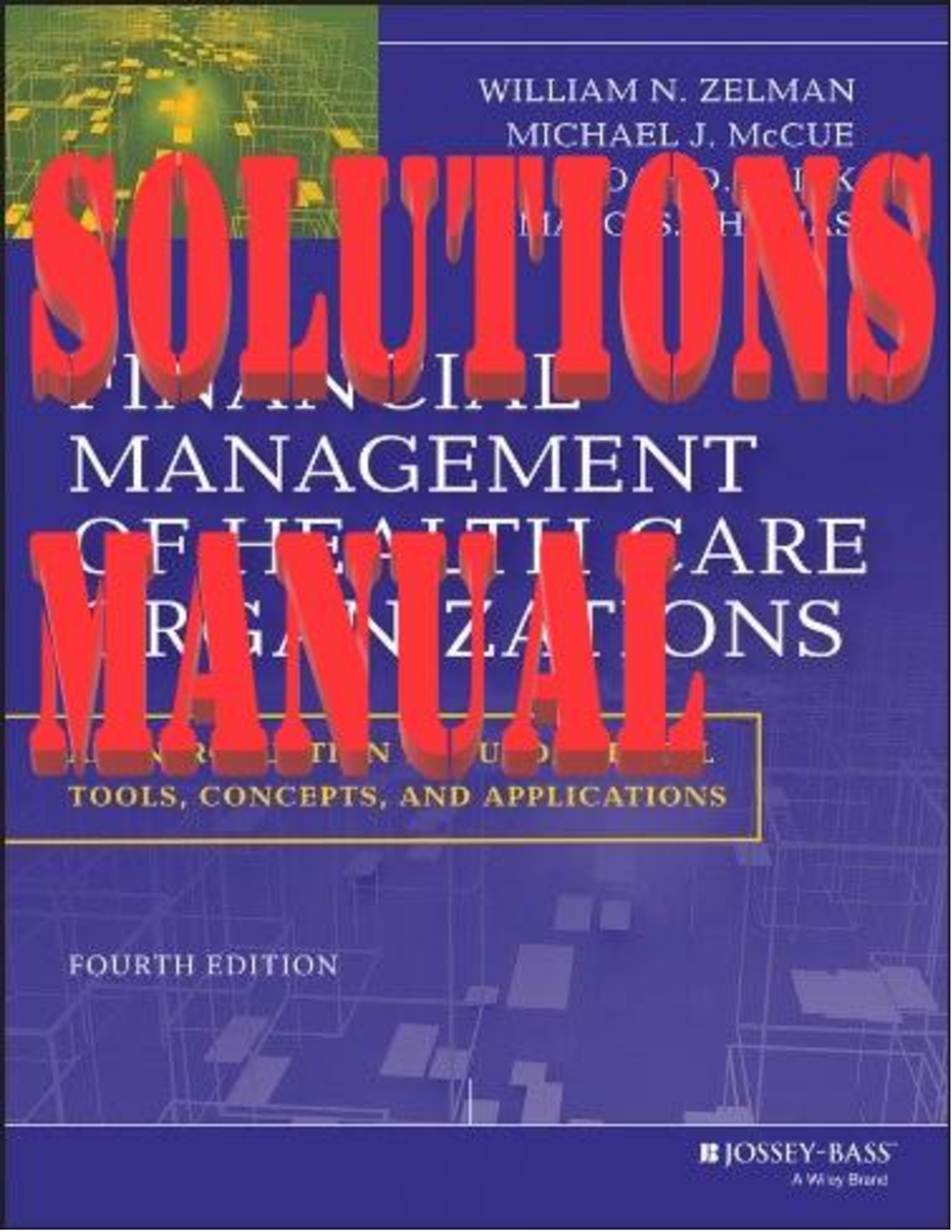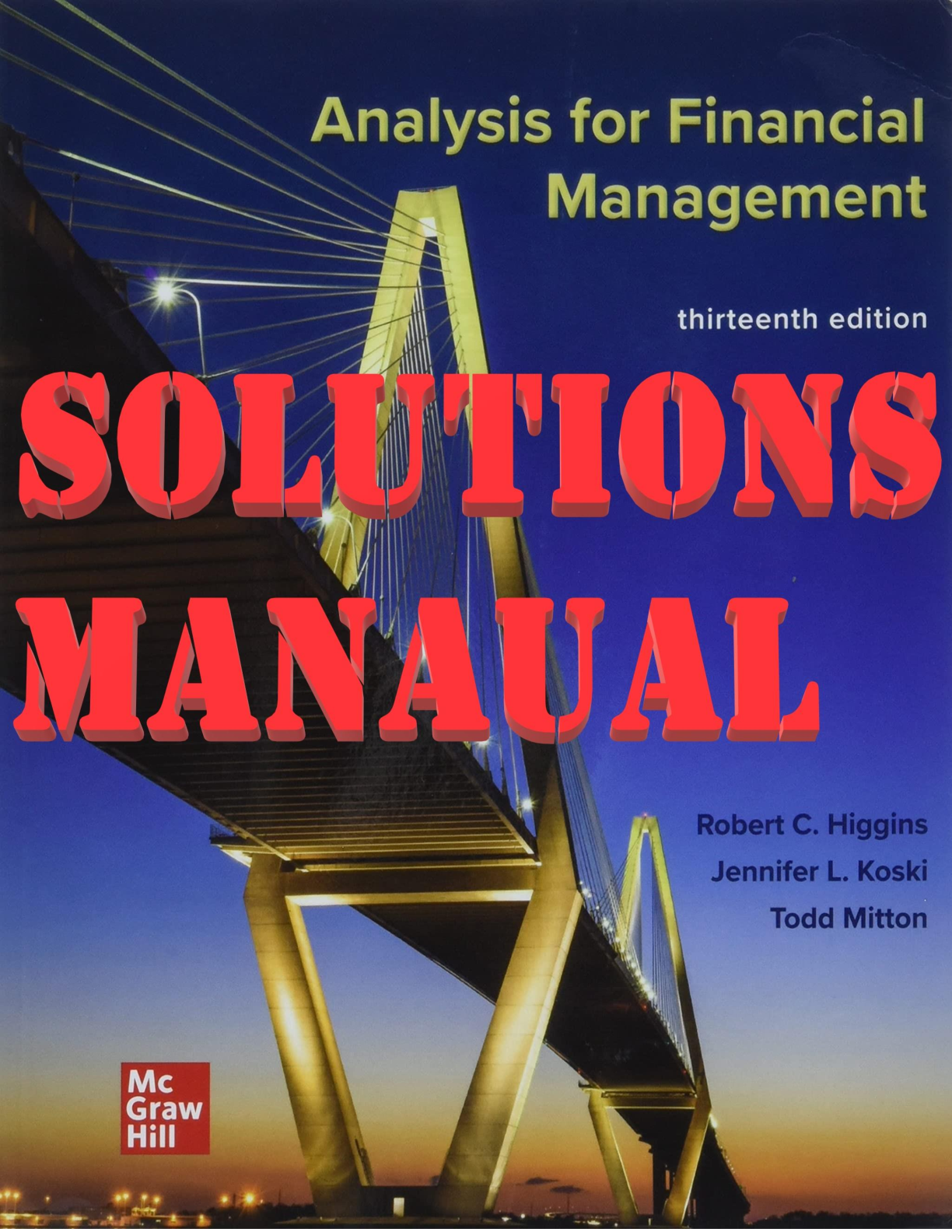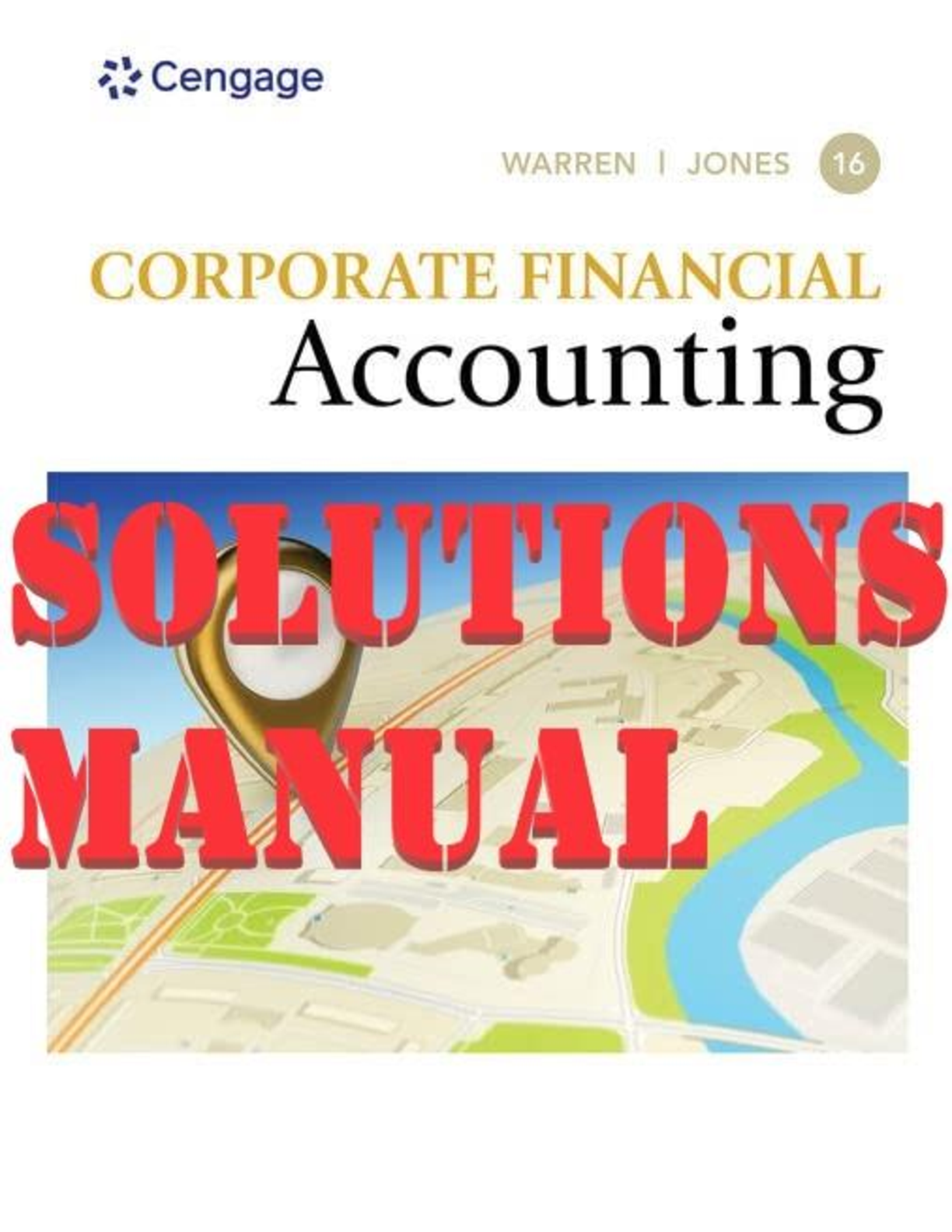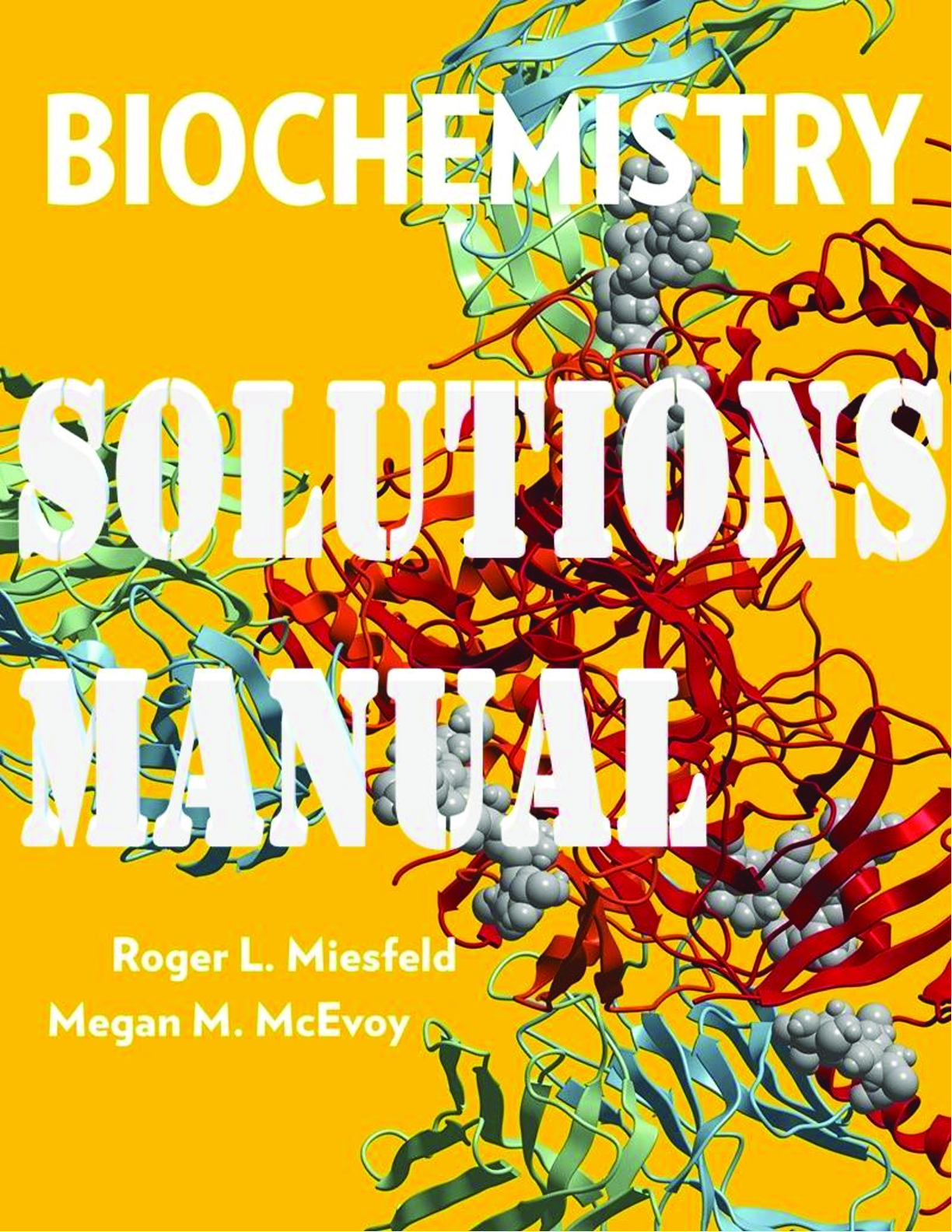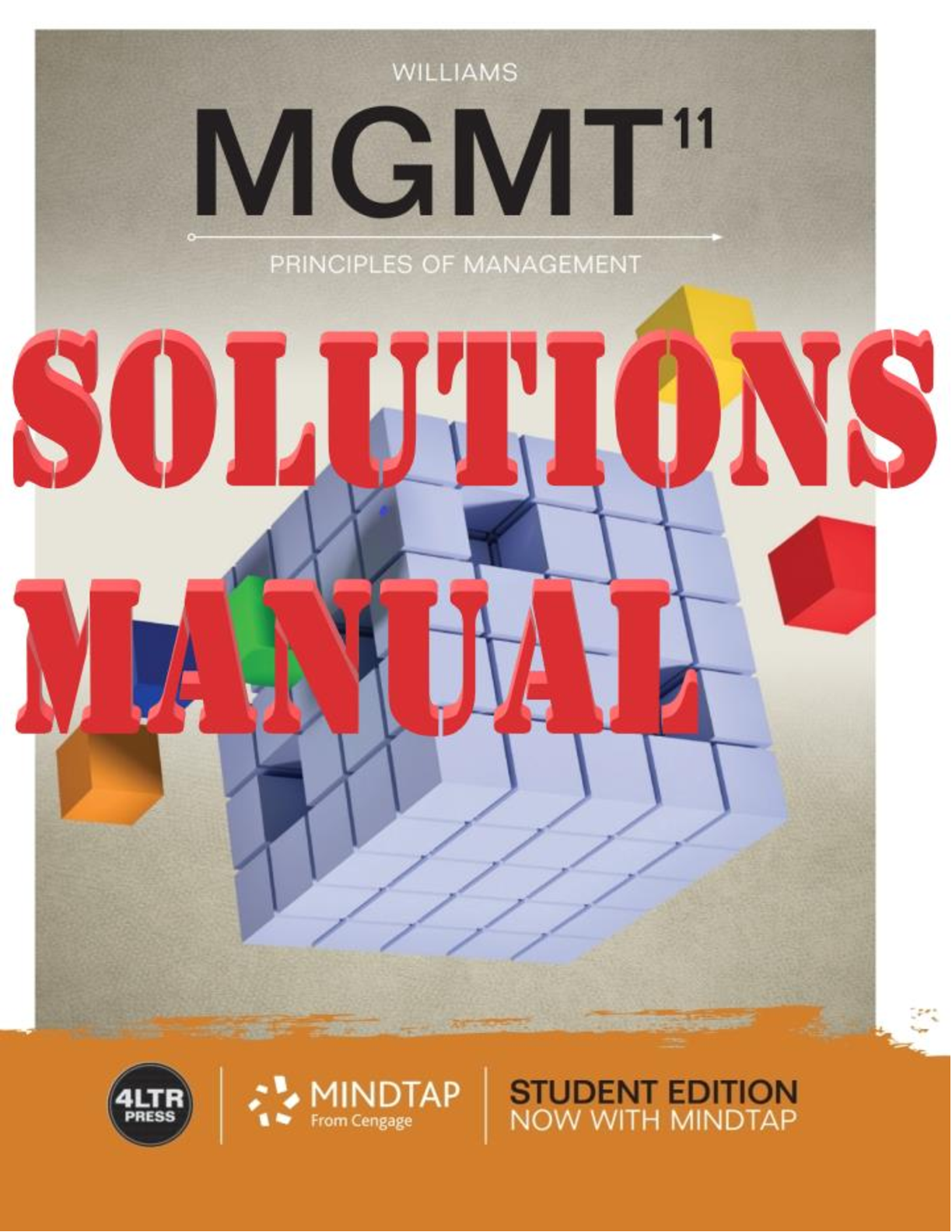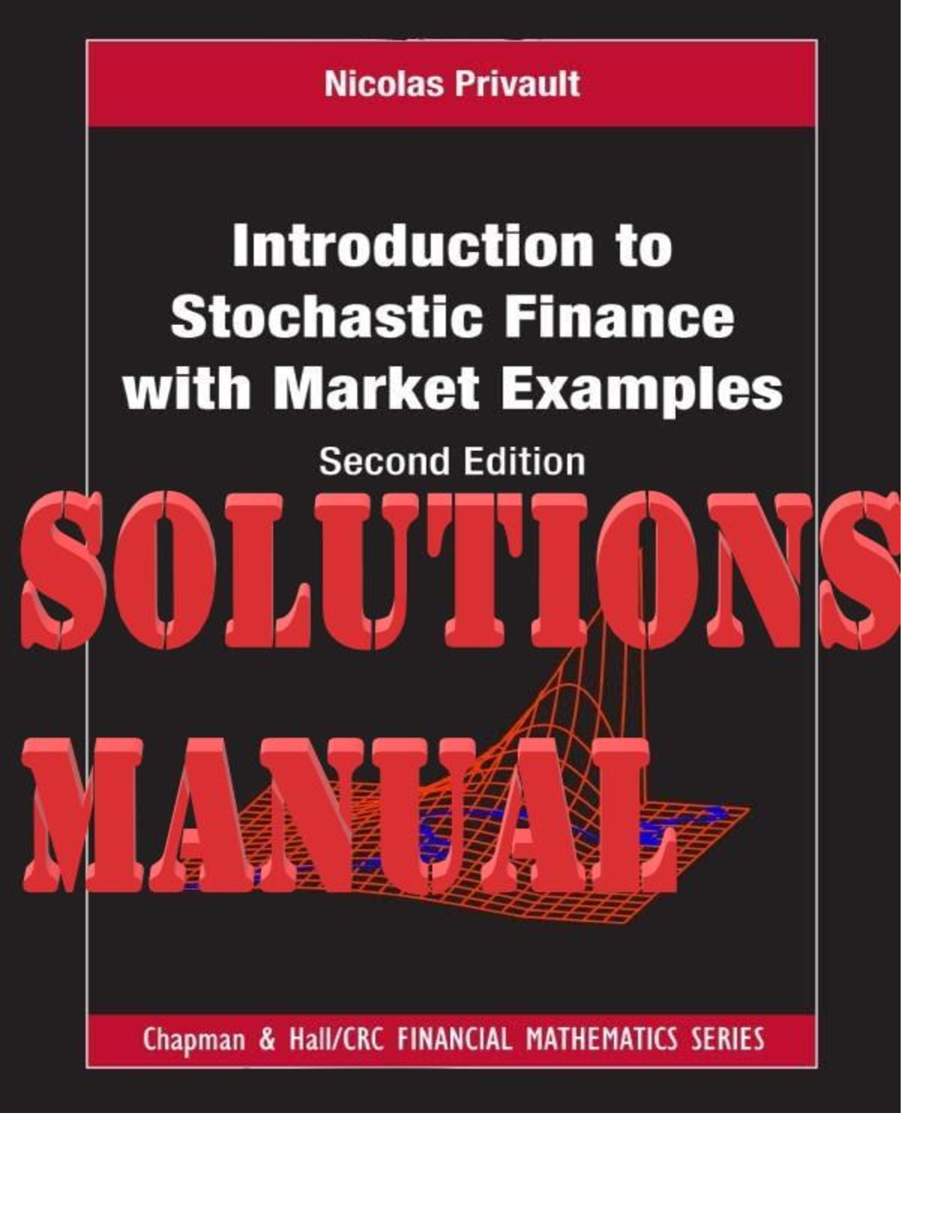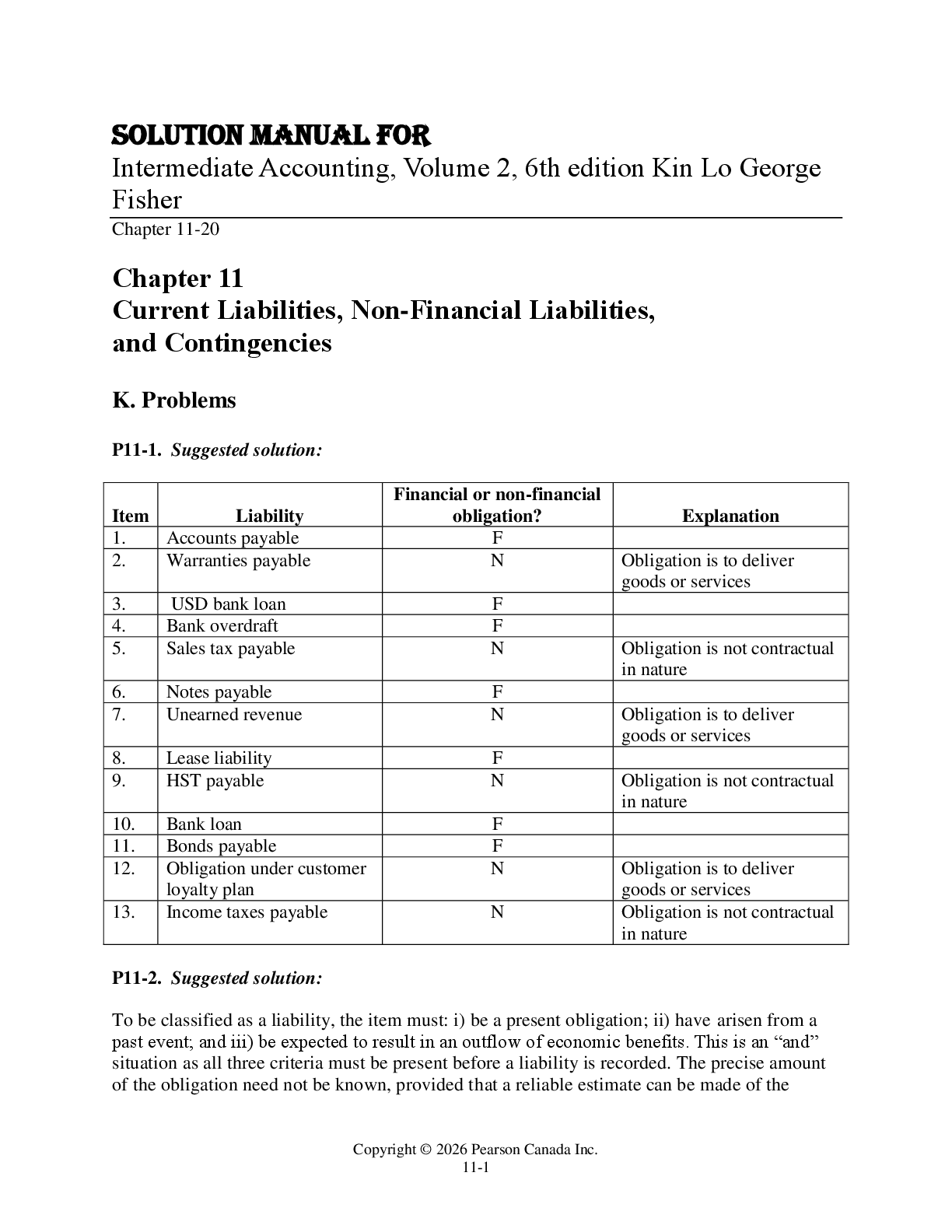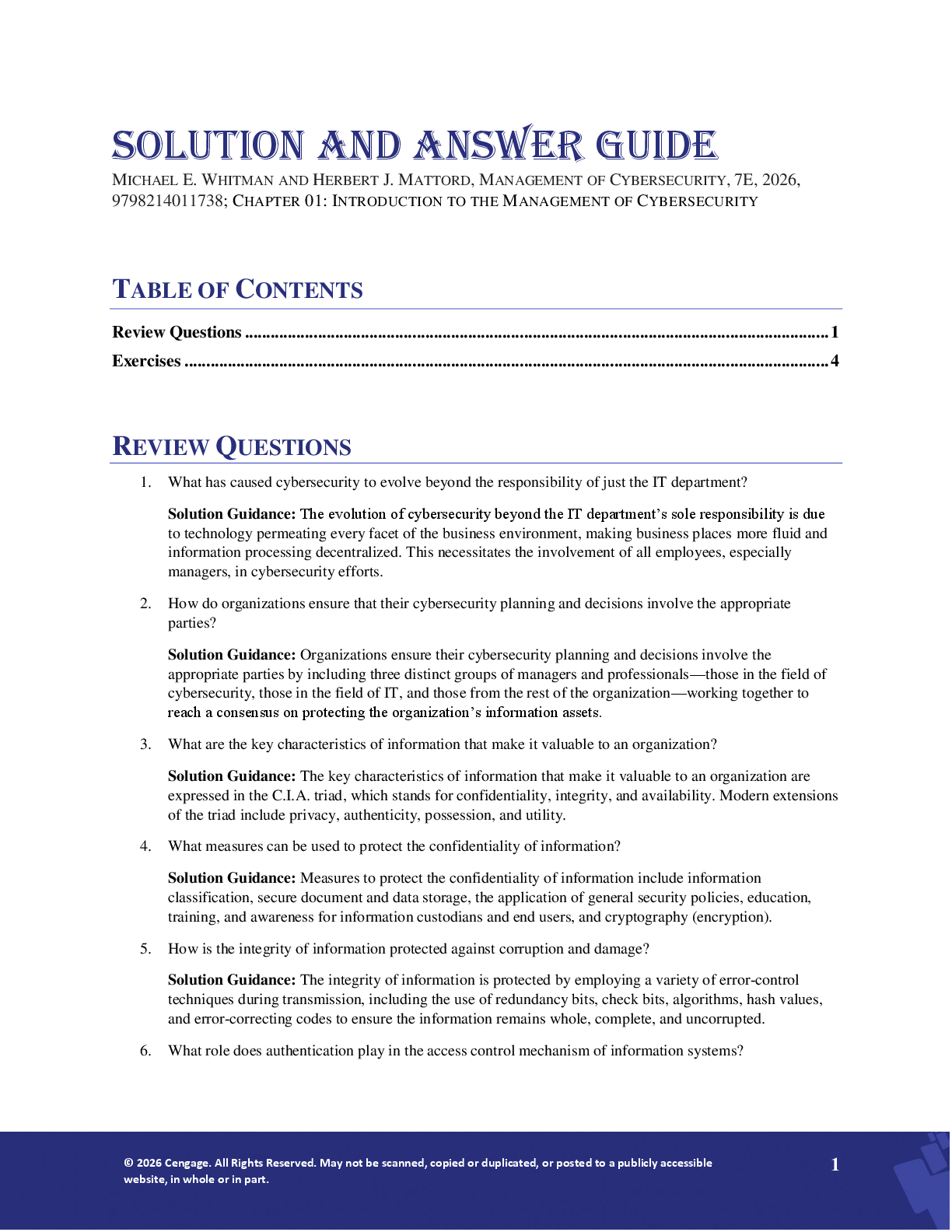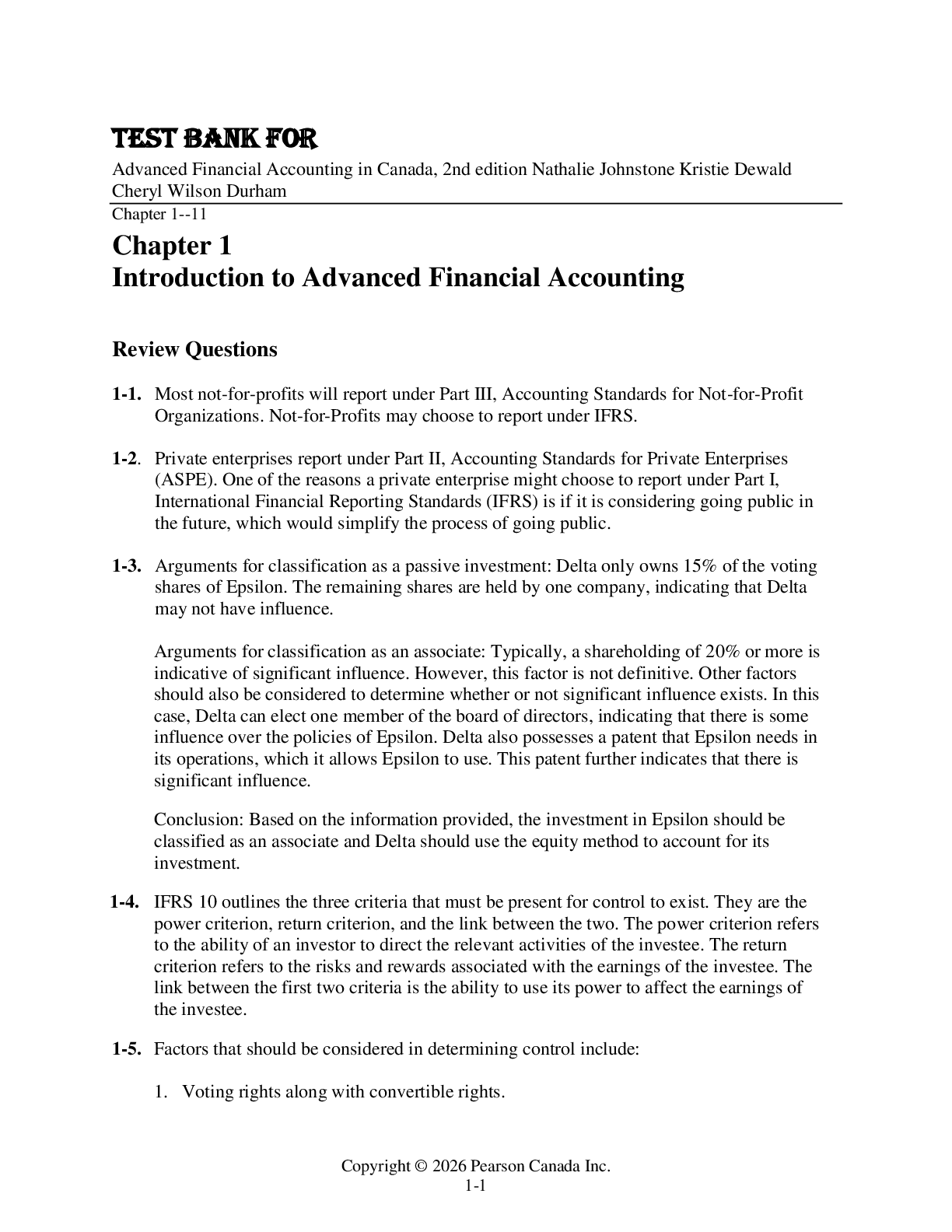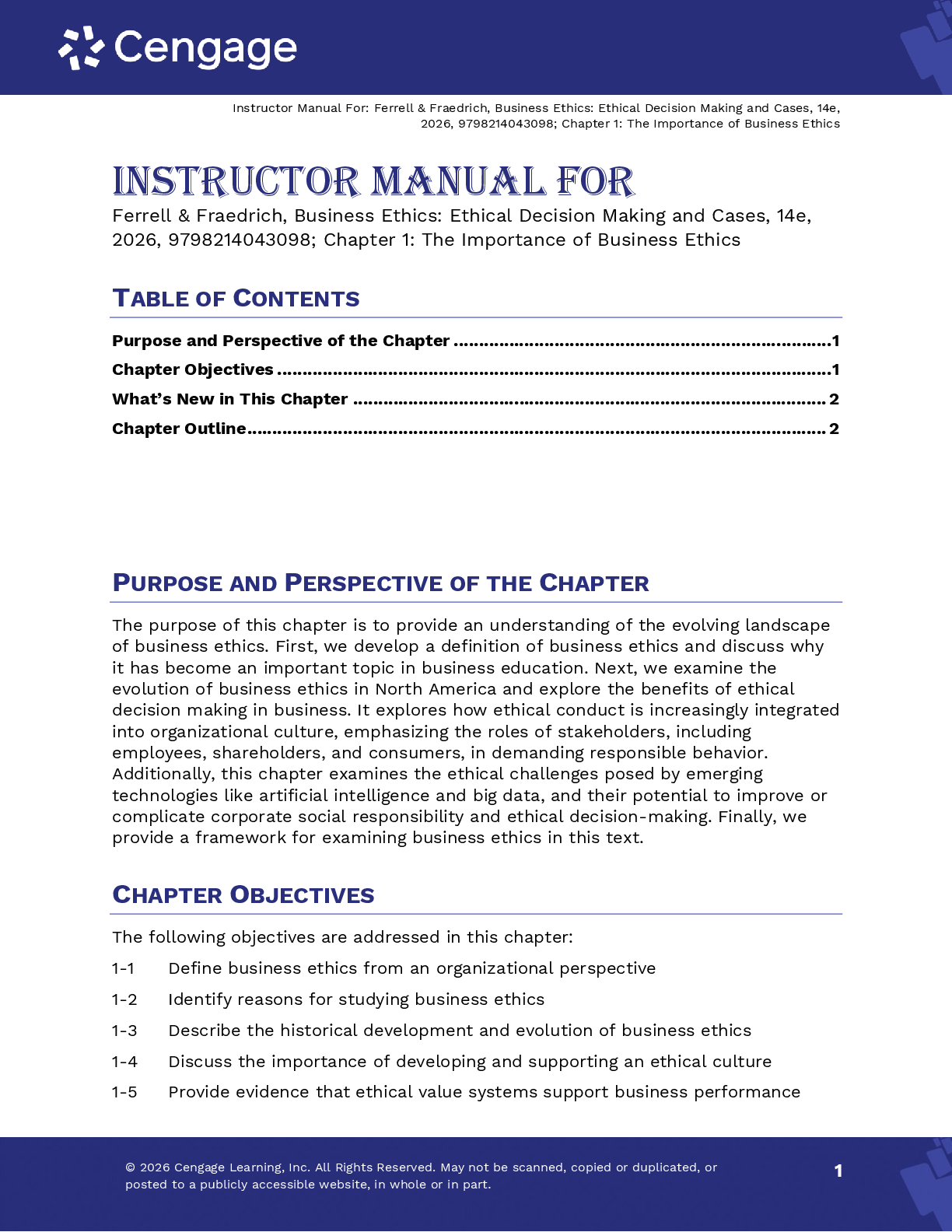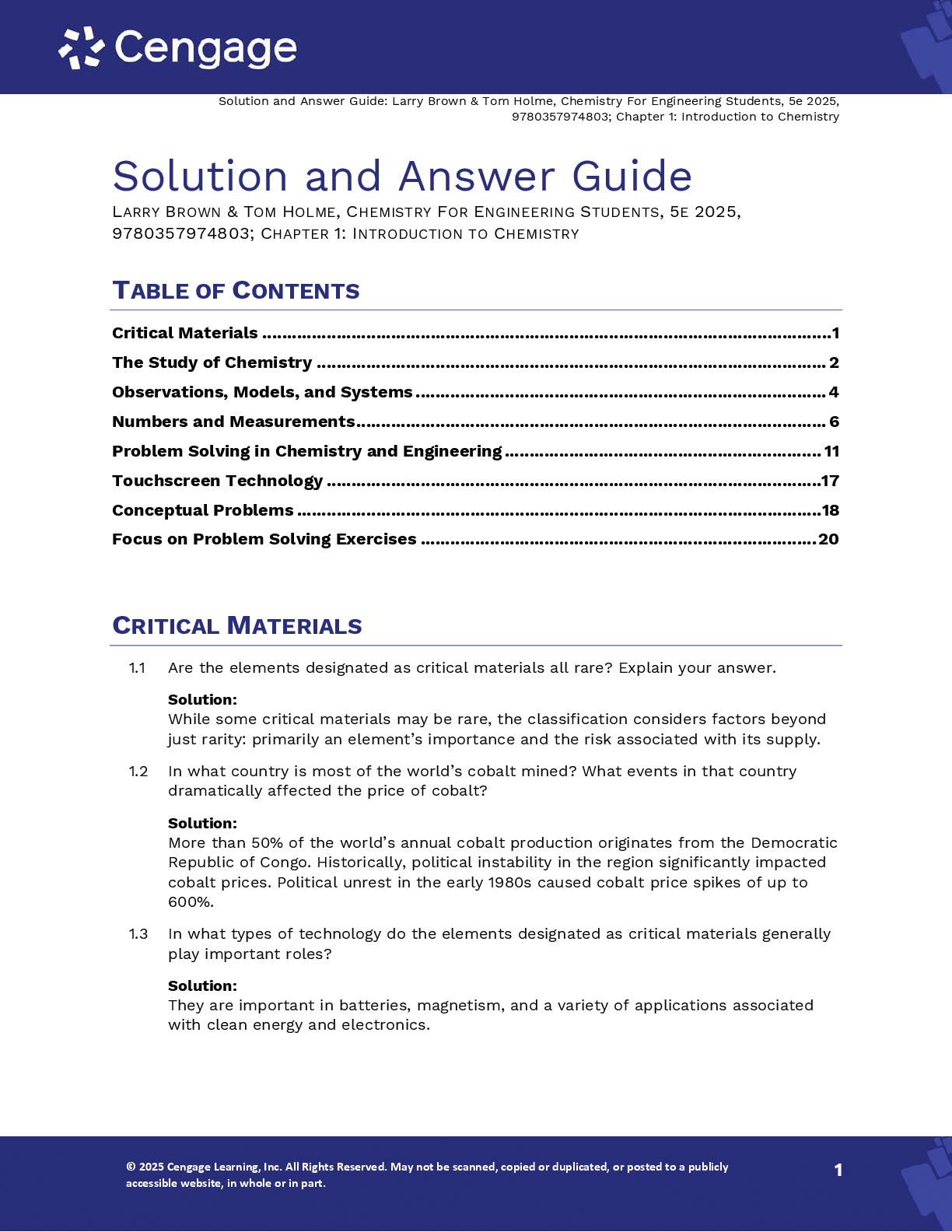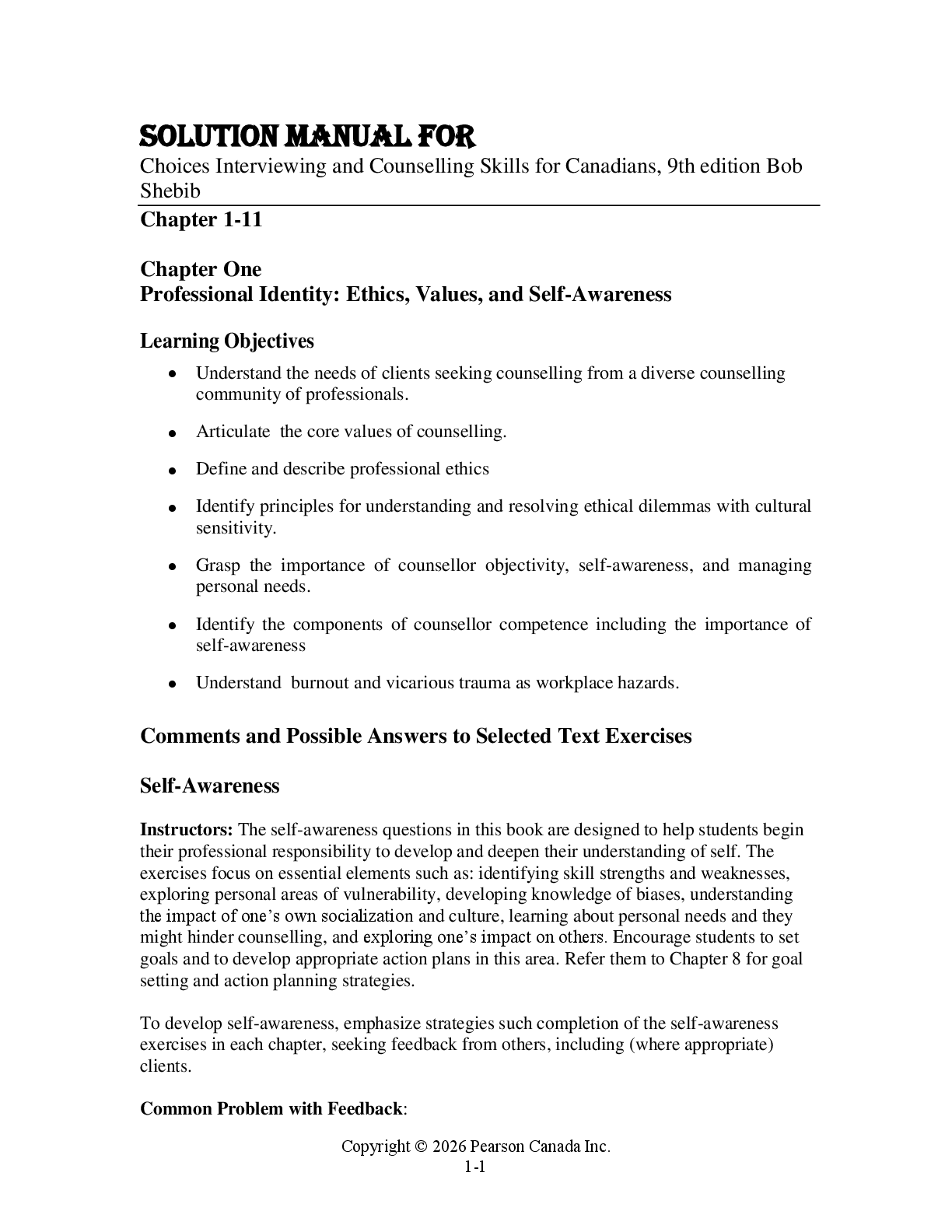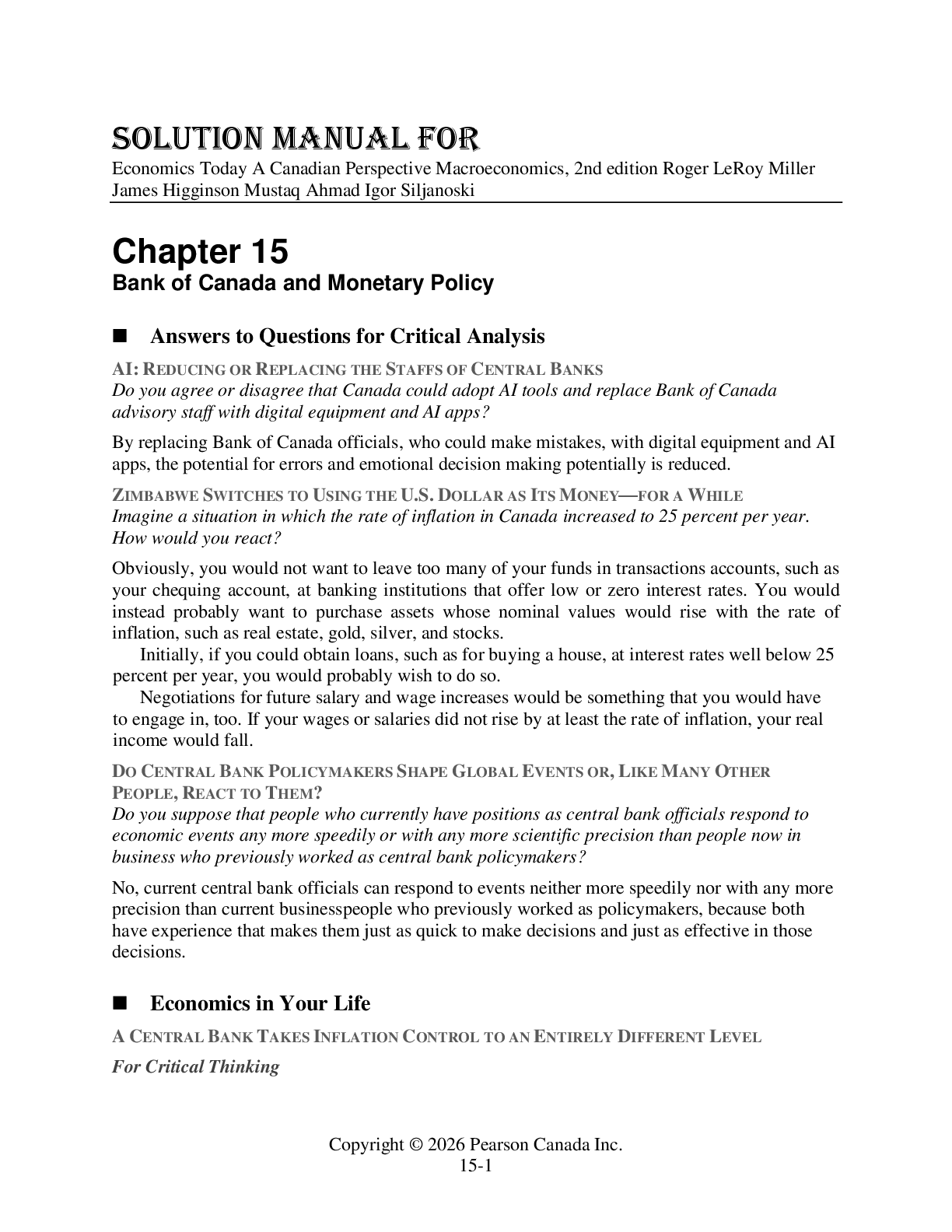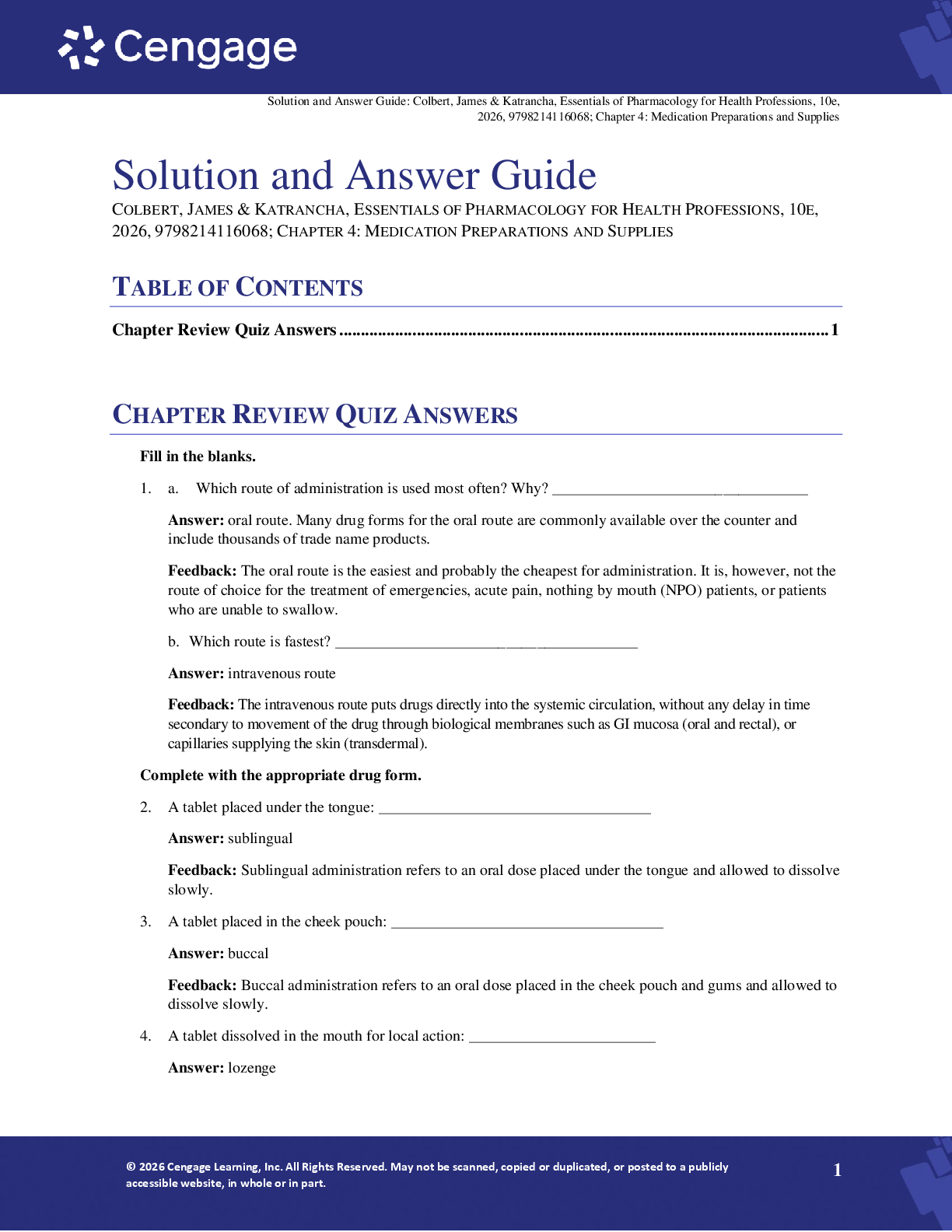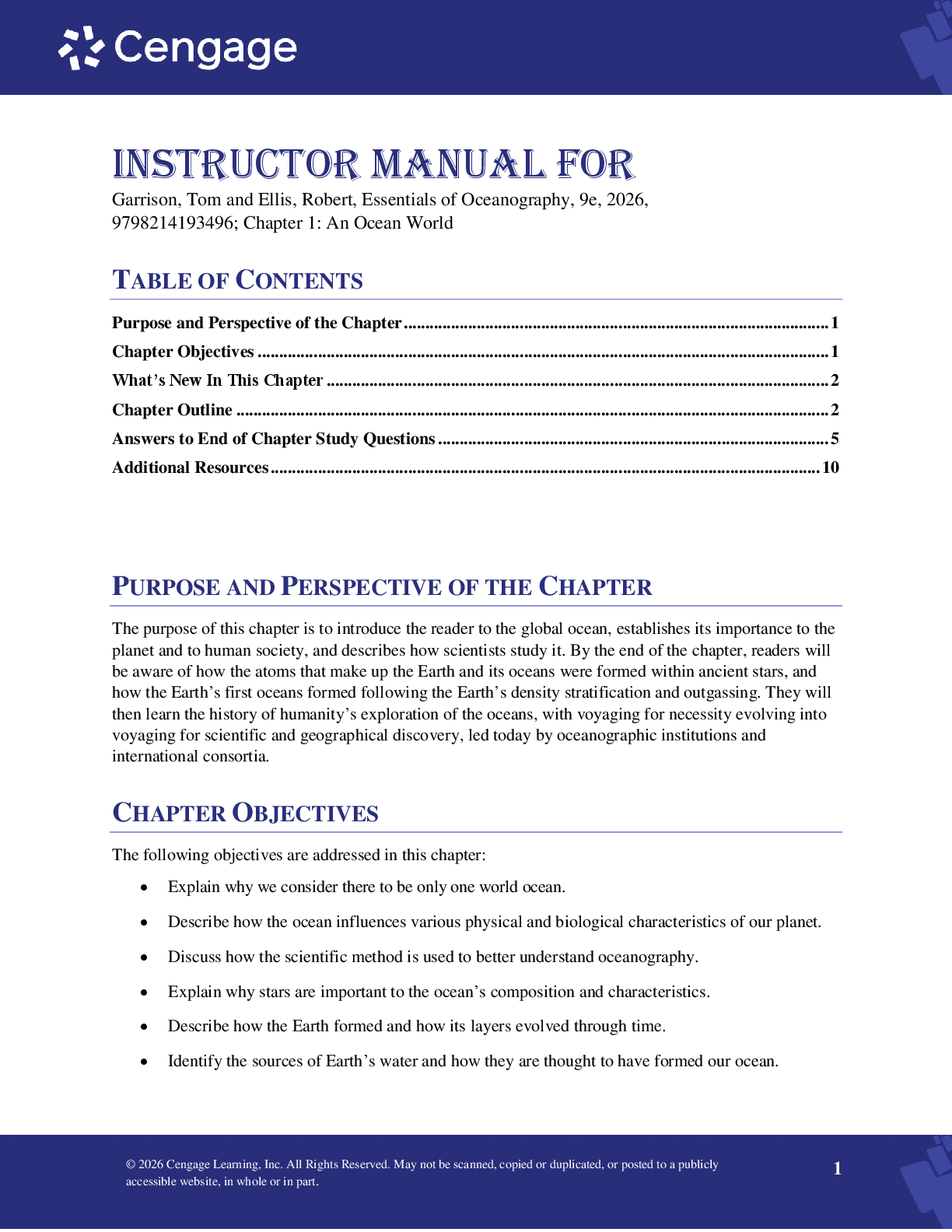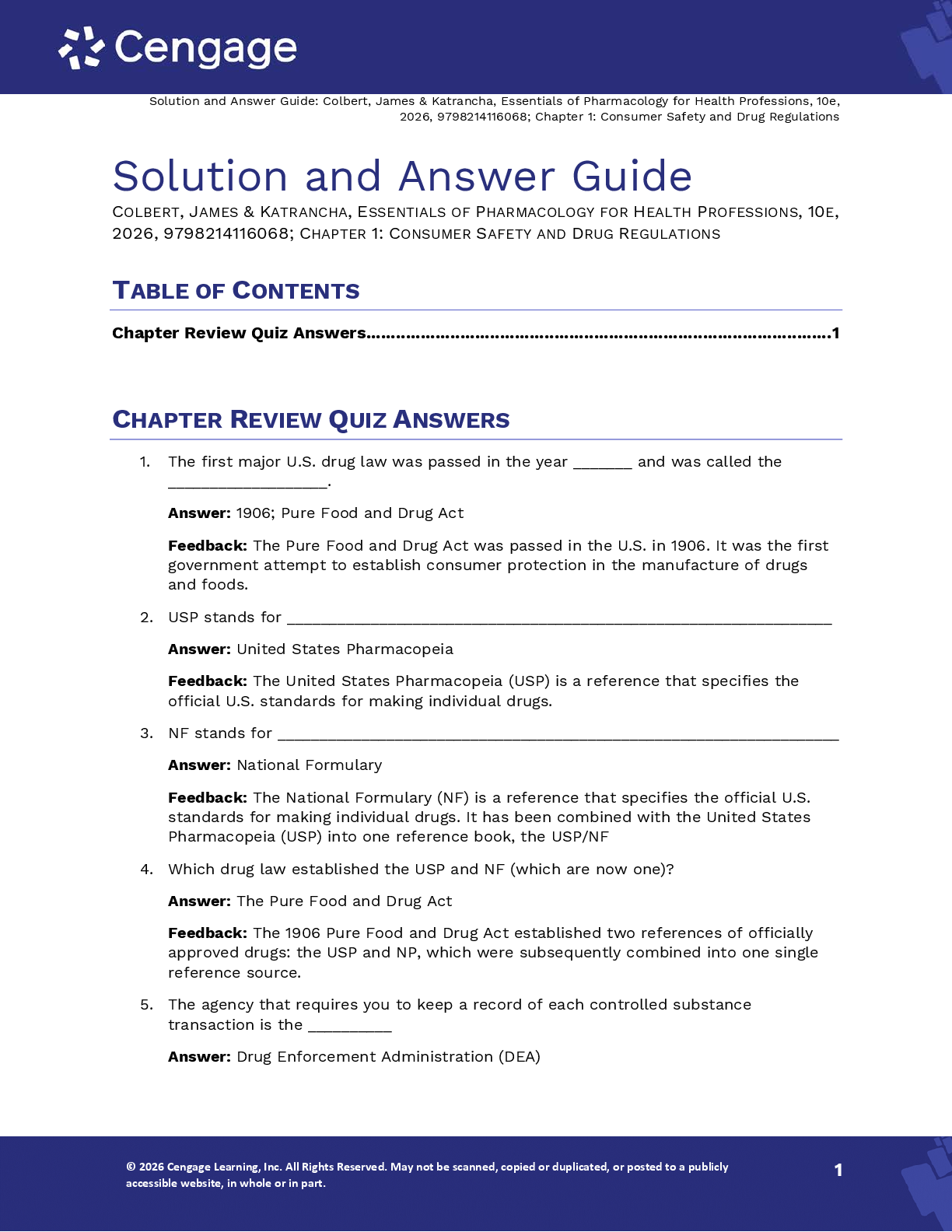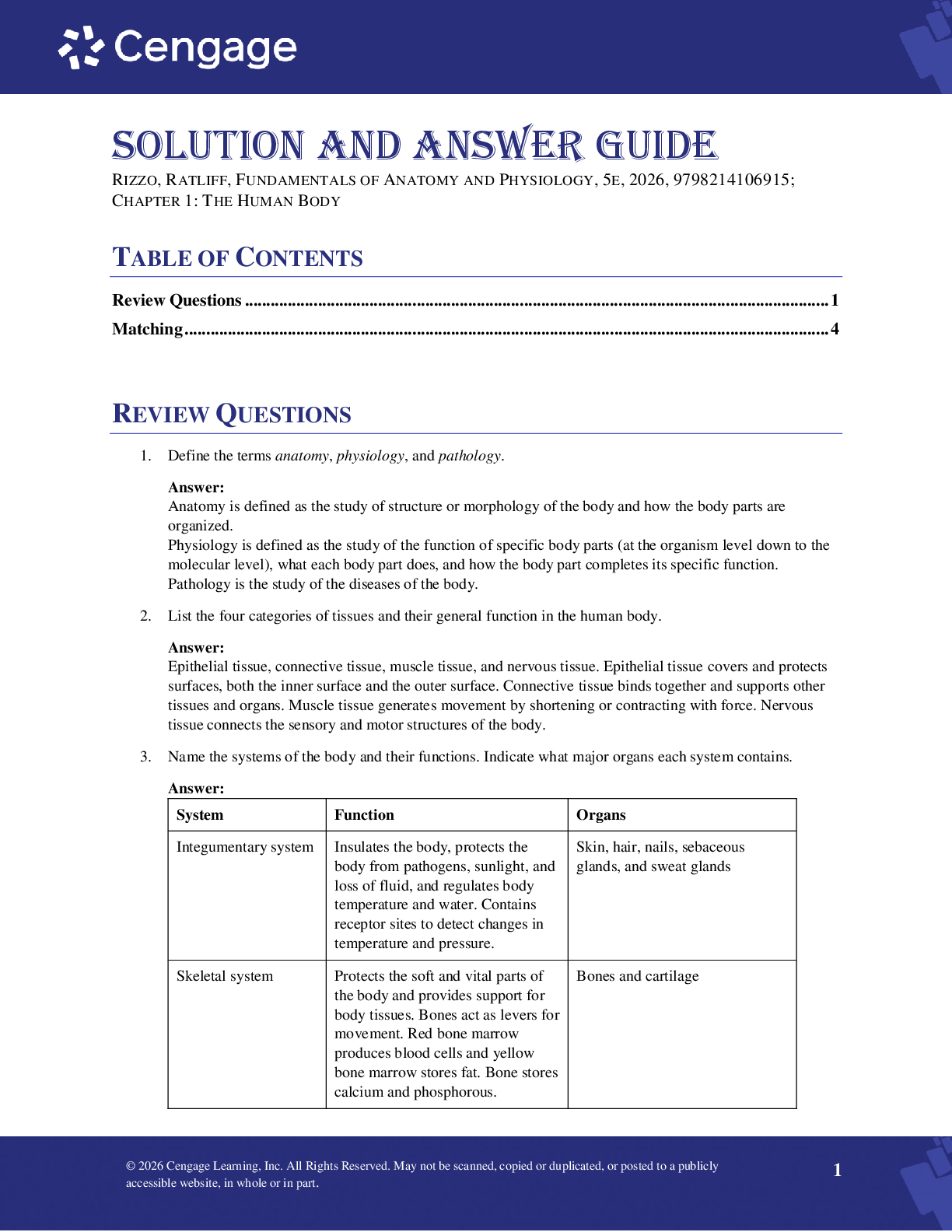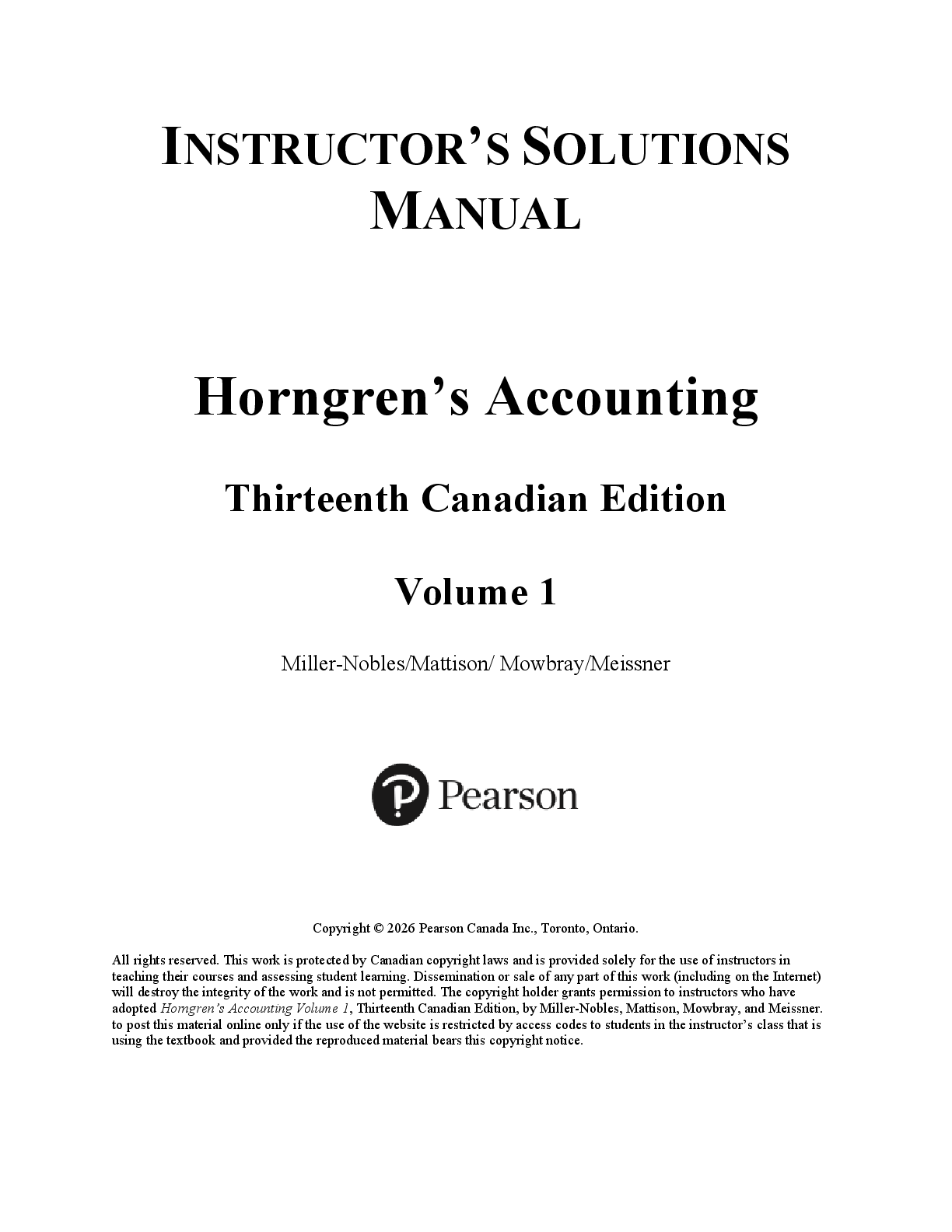Database Management > SOLUTIONS MANUAL > Database Management System: An Evolutionary Approach 1st Edition by Jagdish, Hitesh Kumara and Rav (All)
Database Management System: An Evolutionary Approach 1st Edition by Jagdish, Hitesh Kumara and Ravi | TEST BANK & SOLUTIONS MANUAL
Document Content and Description Below
TEST BANK & SOLUTIONS MANUAL for Database Management System: An Evolutionary Approach [Print Replica] Kindle Edition by Jagdish Chandra Patni, Hitesh Kumar Sharma and Ravi Tomar. ISBN 9780367244934 ... . (Complete Download). Table of Contents 1. Basics of Database. 1.1 Introduction and History of Database. 1.2 Data and Information. 1.3 Database. 1.4 Need for a Database. 1.5 File based database management system. 1.6 Database System. 1.7 Database System components. 1.8 Database Management System Services. 1.9 Database Characteristics. 1.10 Advantages of Database. 1.11 Limitations of Database. Case Studies. 2. Data models and Architecture of DBMS. 2.1 Evolution of Data Model. 2.2 Hierarchical Database Model. 2.3 Network Data Model. 2.4 Relational Database Model. 2.5 Object Oriented Data Model. 2.6 Object Relational Data Model. 2.7 Three Level Architecture of Database. 2.8 Data Independence. 2.9 Database Languages. 3. Relational Database Management System (RDBMS). 3.1 Difference Between RDBMS and DBMS. 3.2 Features of RDBMS. 3.3 Advantages of RDBMS. 3.4 Disadvantages of RDBMS. 3.5 Examples of RDBMS. 3.6 RDBMS Terminologies. 3.7 Keys in Database. 3.8 Integrity Constraints in DBMS. 3.9 Relational Algebra. 3.10 Structured Query Language (SQL). 3.11 CODD’s Twelve Rules of Relational Database. 3.12 Database Development Life Cycle. 4. Entity Relationship Model. 4.1 Entity Relationship Diagram. 4.2 Components of a ER Diagram. 4.3 Participation Constraints. 4.4 Strong and Weak Relationship. 4.5 Handling Many to Many Relationship. 4.6 Example of E-R Model. 4.7 Enhanced Entity-Relationship Model. 4.8 Reduction of ER Diagram to Relational model. 5. Normalization. 5.1 Introduction Normalization –A bottom up approach. 5.2 Need for Normalization. 5.3 Types of Dependencies. 5.4 First Normal Form. 5.5 Second Normal Form. 5.6 Third Normal Form. 5.7 Boyce-Codd Normal Form. 5.8 Multi-valued Dependency. 5.9 Join Dependency. 5.10 Lossless and Lossy Decompositions. 6. Managing Data Using Structured Query Language (SQL). 6.1 Introduction to SQL. 6.2 Data Definition Commands. 6.3 Data Manipulation Language (DML). 6.4 Data Control Language. 6.5 Transaction Control Language (TCL). 6.6 Data Query Language (DQL). 6.7 Aggregate Functions. 6.8 Date and Time Functions. 6.9 String Functions. 6.10 Conversion Functions. 6.11 Mathematical Functions. 6.12 Special Operators. 6.13 Types of Constraints. 6.14 Sub Query. 7. Introduction to PL/SQL. 7.1 Variable and Constants. 7.2 Data Types. 7.3 PL/SQL Literals. 7.4 Control Statement. 7.5 PL/SQL case statement. 7.6 PL/SQL Loop. 7.7 PL/SQL Continue statement. 7.8 PL/SQL GOTO statement. 7.9 PL/SQL Procedure and Functions. 7.10 PL/SQL cursor. 7.11 PL/SQL Exception. 7.12 PL/SQL Exception Handling. 7.13 PL/SQL Triggers. 8. Transaction Management in Database. 8.1 Definition of Transaction. 8.2 Properties of Transaction. 8.3 States of Transactions. 8.4 Schedule. 8.5 Serializability. 8.6 Recoverable Schedules. 8.7 Concurrency Control. 8.8 Concurrency Control Mechanism. 8.9 Database Back UP and Recovery. 8.10 Security, Integration and Authorization. [Show More]
Last updated: 5 months ago
Preview 5 out of 53 pages

Loading document previews ...
Buy this document to get the full access instantly
Instant Download Access after purchase
Buy NowInstant download
We Accept:

Reviews( 0 )
$22.00
Can't find what you want? Try our AI powered Search
Document information
Connected school, study & course
About the document
Uploaded On
Feb 02, 2023
Number of pages
53
Written in
All
Additional information
This document has been written for:
Uploaded
Feb 02, 2023
Downloads
0
Views
322

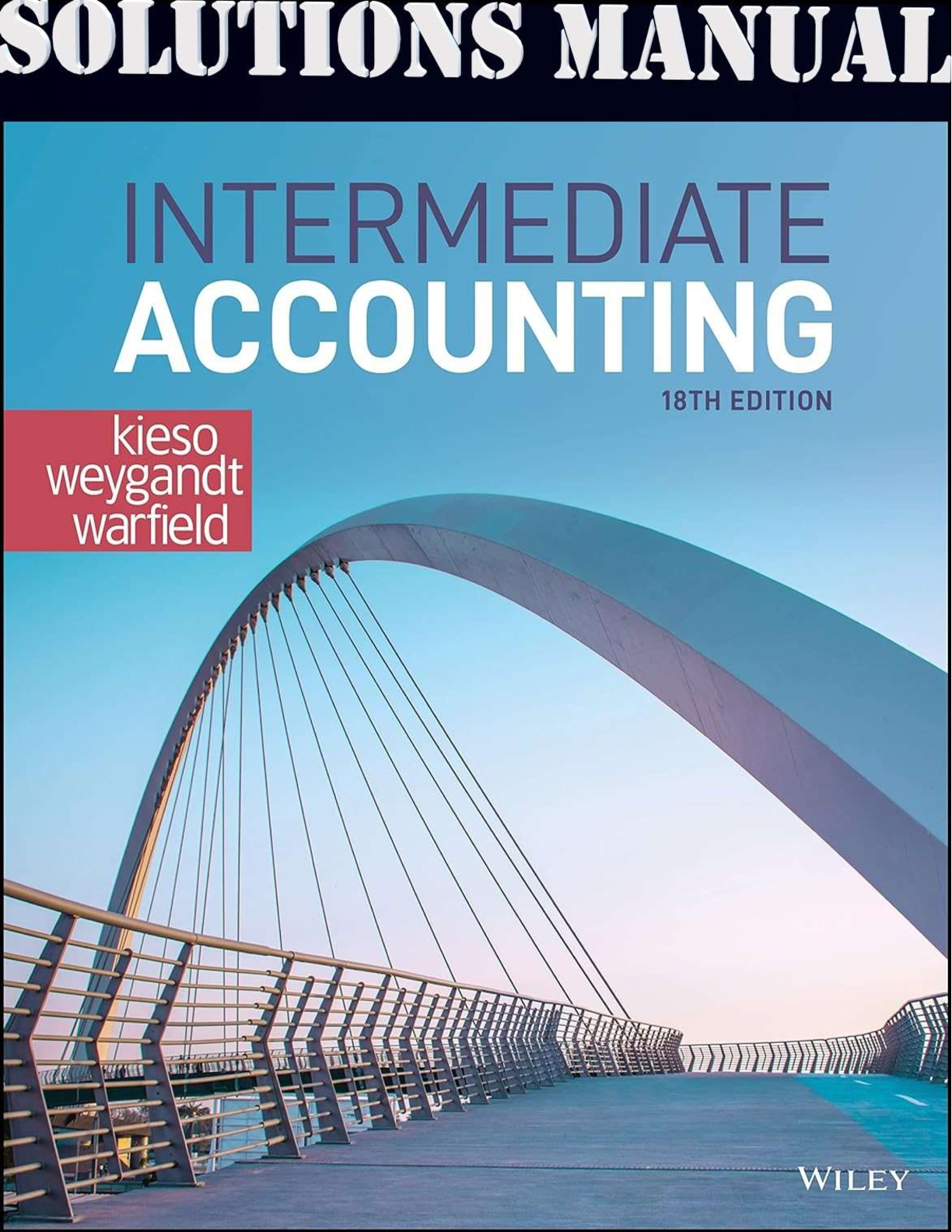
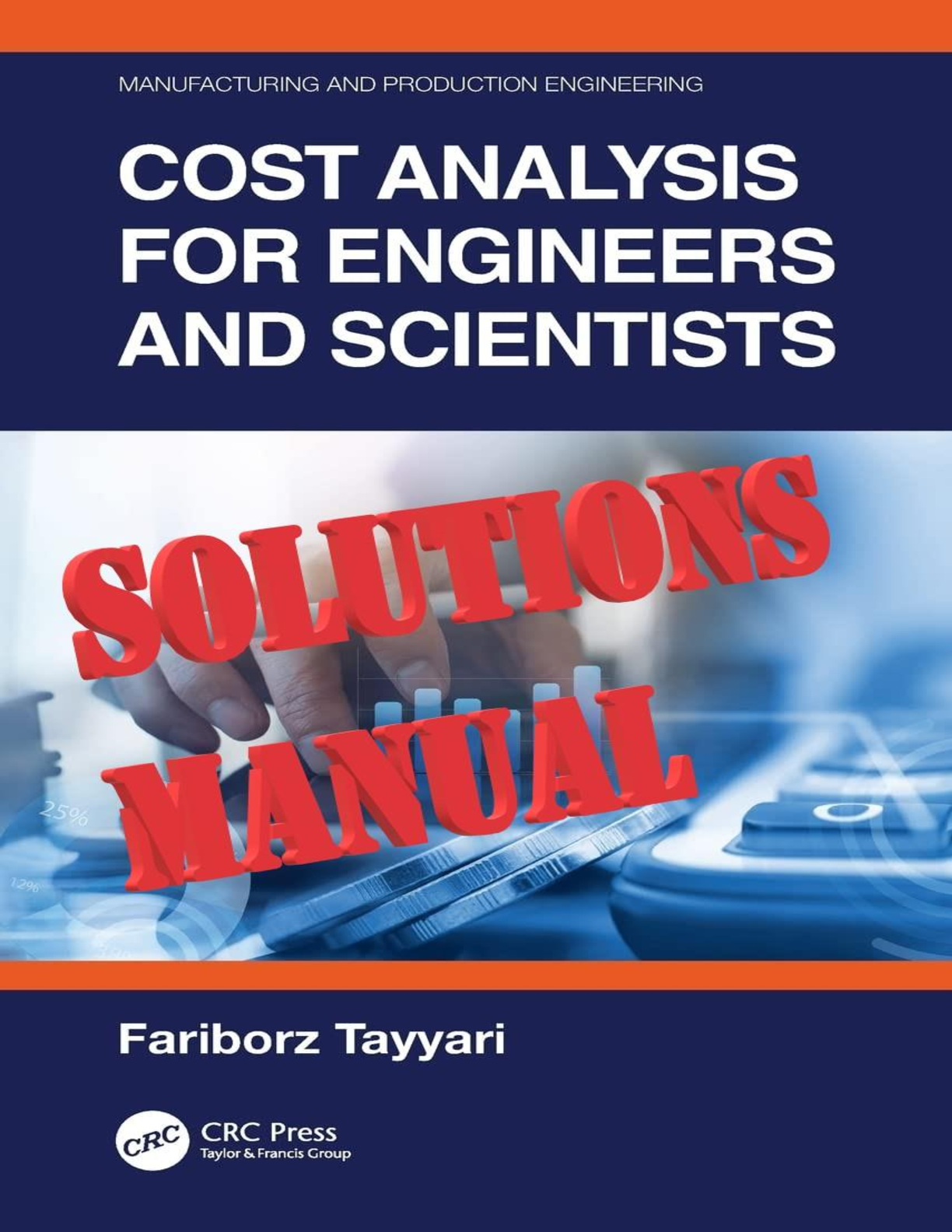
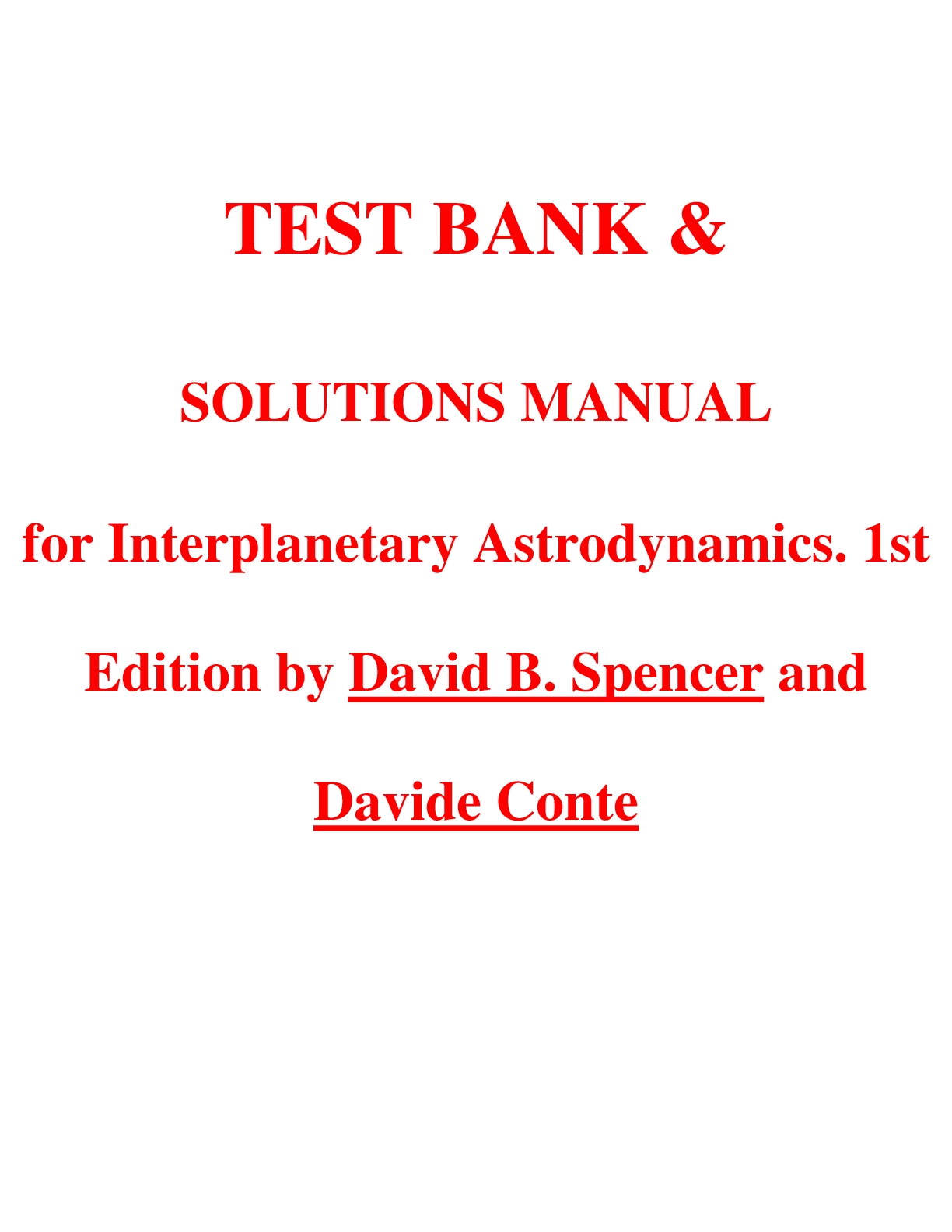
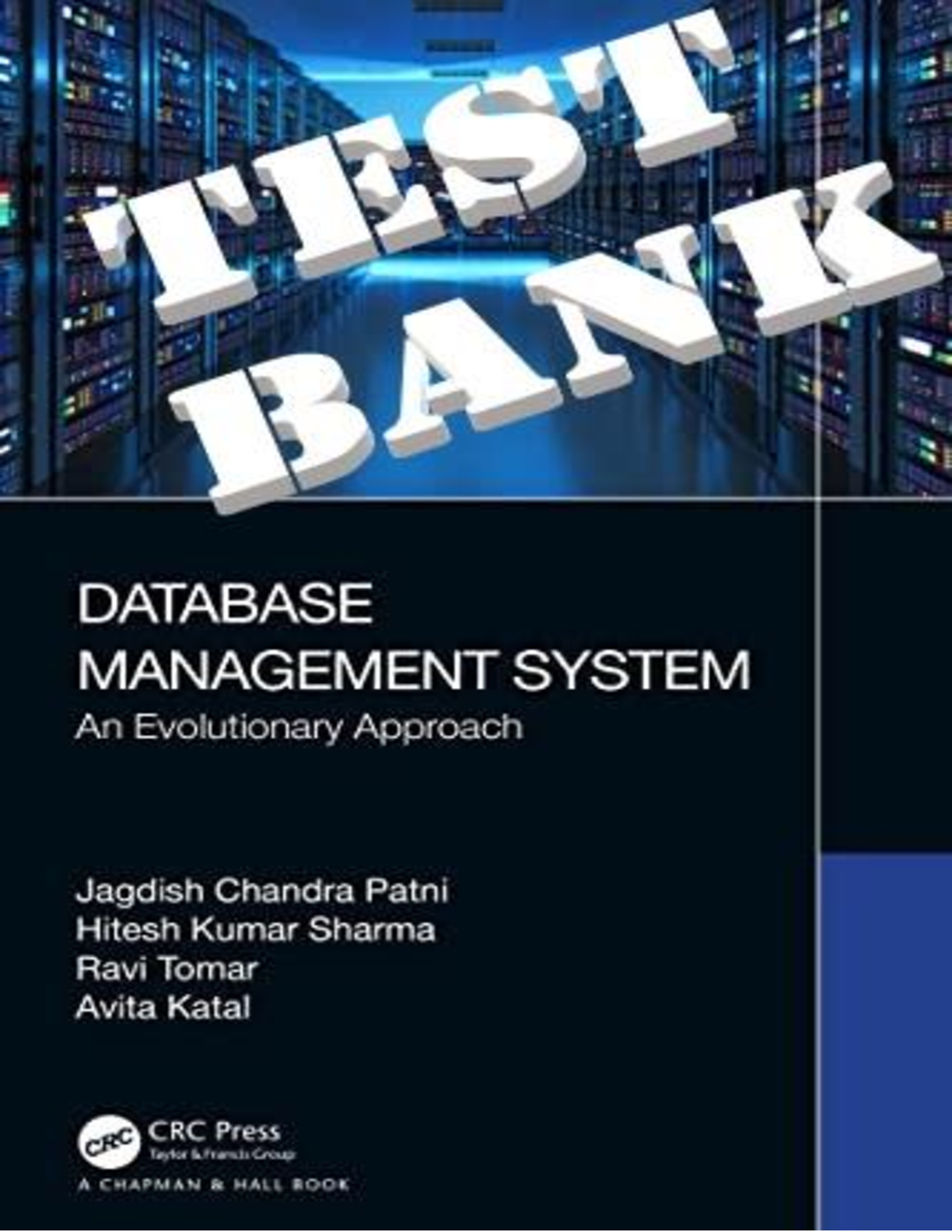
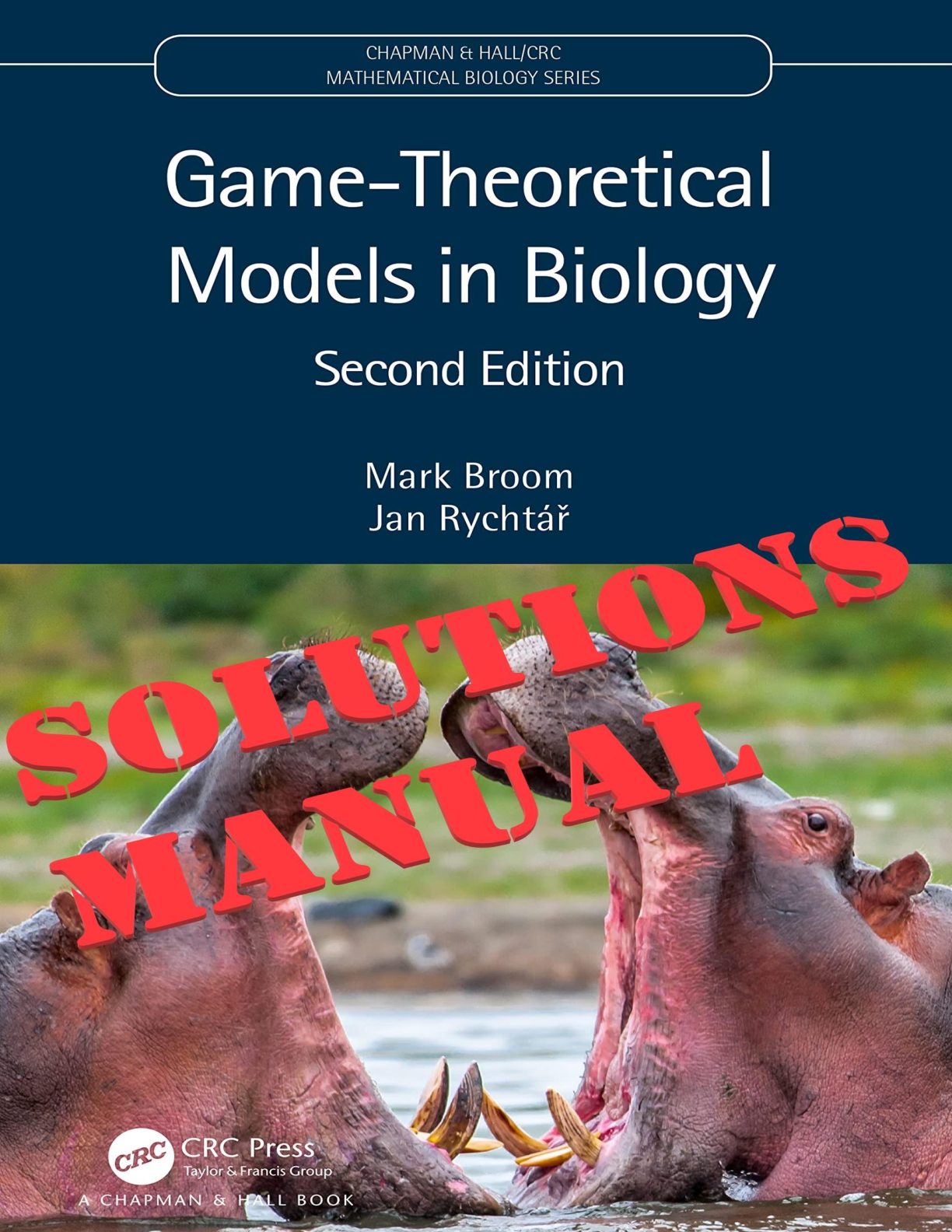
, 3e by Steven Kr.png)
